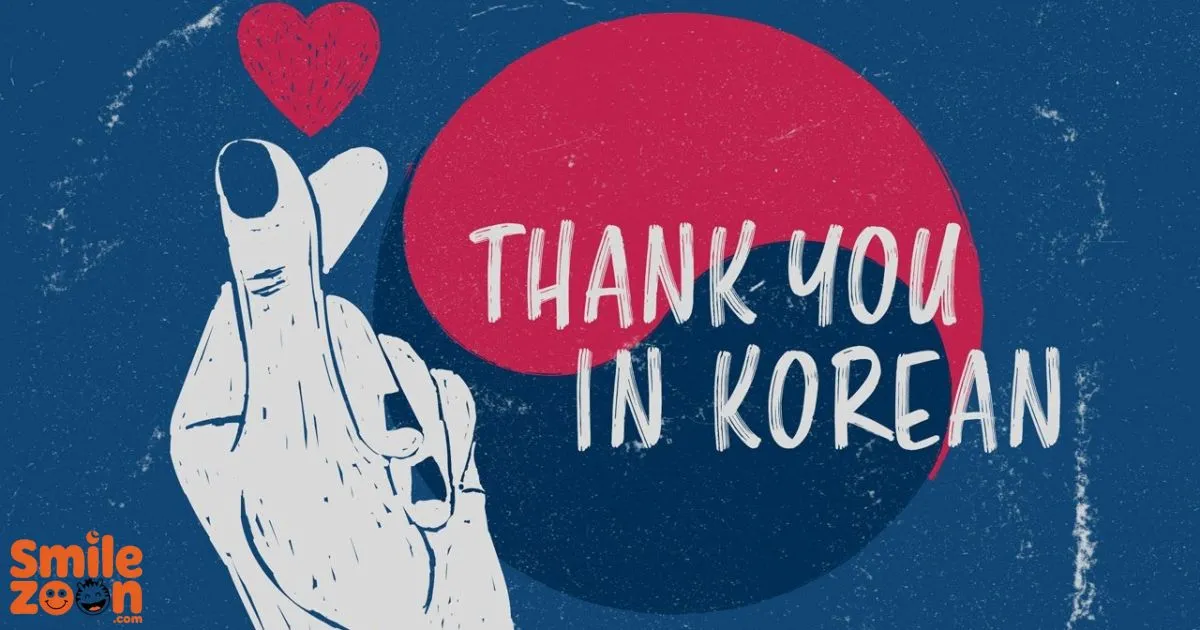In Korean culture, showing appreciation is a meaningful way to build lasting connections and strong bonds among people. Whether you are a speaker or a listener, expressing gratitude with phrases like 감사합니다 (gamsahamnida) reflects respect and polite behavior that is deeply valued by the Korean people. Saying thank you is not just about being pleased or happy; it’s also about recognizing good actions and offering help sincerely.
The Korean language has many expressions for gratitude, each with different levels of formality, which can be challenging because the language is often considered difficult to learn. Understanding these nuances is essential, especially during special occasions, where using the right phrase strengthens relationships and shows genuine respect.
How Do We Say Thank You in Korean in Formal Language
If you’ve ever tried learning the Korean language, you might have noticed how many ways there are to say “thank you.” This can be confusing because Korean culture puts a lot of importance on using the right levels of formality.
You might wonder, “When do I use formal phrases? What if I say the wrong one?” That’s normal! Especially for people new to the language, understanding formal expressions like 감사합니다 (gamsahamnida) is tricky but important. Using formal thank you correctly shows respect and helps build strong bonds in both business and social settings.
- 감사합니다 (gamsahamnida) is the most common formal way to say thank you.
- Use formal thank you in work meetings, with elders, or in official situations.
- Saying thank you formally shows polite behavior and respect.
- You can add honorifics for extra politeness, like 정말 감사합니다 (jeongmal gamsahamnida) meaning “Thank you very much.”
- Formal expressions are used during special occasions like weddings or official ceremonies.
- Using formal language helps maintain lasting connections in Korean society.
- Formal thank you phrases are important in emails or letters to superiors.
- In formal settings, never skip saying thank you, even for small favors.
- Formal Korean reflects the hierarchical nature of Korean culture.
- Practicing formal phrases boosts your confidence as a speaker.
- Formal thank yous are essential in professional and public environments.
- Koreans appreciate foreigners who respect their language formality.
- Mastering formal thank you phrases helps you understand other levels of formality better.
How to Say Thank You in Korean Words Casually
If formal Korean feels too hard or stiff, you might want to know how to say thank you more casually. Many learners get stuck here, wondering when casual language is okay. You might think casual means rude, but in fact, casual expressions are a sign of closeness in Korean culture.
Using casual thank yous with friends or younger people feels natural and creates a friendly atmosphere. But how do you know which words to use casually, without sounding impolite?
Here are 13 casual ways to say thank you in Korean:
- 고마워 (gomawo) is the standard casual thank you used among friends.
- You can say 고마워요 (gomawoyo) for polite but still casual situations.
- Casual thank yous are common among peers, classmates, or close colleagues.
- Use casual words only if you know the person well, to avoid disrespect.
- Adding 정말 고마워 (jeongmal gomawo) means “Really thanks” casually.
- Casual thank yous make you sound friendly and approachable.
- You can say 고맙다 (gomapda) as a casual expression in written texts.
- Casual language reflects how close or informal your relationship is.
- Younger Koreans often use casual thank yous in texts and chats.
- Casual expressions show gratitude without too much formality.
- In casual situations, saying thank you strengthens personal bonds.
- Knowing casual phrases helps you be a better listener in daily life.
- Using casual thank yous appropriately keeps your Korean natural and relaxed.
Read More Ways:Polite and Warm Ways to Say Thank You in French
How Do I Say Thank You in Korean In Everyday Life:
Everyday life is full of moments when you want to say thank you — at the store, with neighbors, or with strangers. But it’s not always clear which expression fits best. Many learners get confused, thinking they need formal or casual words every time. The truth is, Korean language is flexible, and everyday thank yous change depending on who you’re talking to. Getting this right helps you connect with the Korean people and feel comfortable in daily conversations.
Here are 13 useful tips for saying thank you in Korean during everyday life:
- Use 감사합니다 (gamsahamnida) in public places for polite everyday thanks.
- Say 고마워요 (gomawoyo) to people you meet regularly but not close friends.
- Use casual 고마워 (gomawo) with family and close friends.
- When someone helps you briefly, a simple thank you shows appreciation.
- Add a smile when saying thank you to show sincerity.
- Learn to recognize when someone expects a formal or casual thank you.
- Saying thank you at shops or restaurants is always polite and appreciated.
- Use 정말 감사합니다 (jeongmal gamsahamnida) for special thanks in daily life.
- When receiving help from strangers, use polite phrases.
- Children learn casual thank yous first, then move to formal ones.
- Korean people appreciate even small thank you gestures.
- Using correct thank yous in everyday life builds lasting connections.
More Unique Ways:Top Ways to Say Thank You in Italian
Conclusion
Learning how to say thank you in Korean is more than just memorizing words — it’s about understanding the heart of Korean culture and the importance of polite behavior in building strong bonds and lasting connections.
Whether you use formal phrases like 감사합니다 (gamsahamnida) or casual words with friends, knowing the right levels of formality will help you communicate sincerely and respectfully. The Korean language may seem difficult to learn at first, but practicing these expressions in everyday life will make you a confident speaker and thoughtful listener. Showing genuine appreciation through words is a beautiful way to spread happiness, strengthen relationships, and embrace the warmth of the Korean people.




